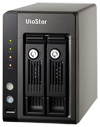 If you’re looking to buy a Network Video Recorder (NVR) or especially a configurable NVR like those with QNAP that offer your choice of storage, there may be a shipment delay due to flooding in Thailand that is affecting hard drive production.
If you’re looking to buy a Network Video Recorder (NVR) or especially a configurable NVR like those with QNAP that offer your choice of storage, there may be a shipment delay due to flooding in Thailand that is affecting hard drive production.
The damage from flooding could keep factories closed for months so manufacturers who have an immediate hard drive need are stocking up quickly. The last few months of 2011 are expected to be tight and Q1 2012 could be slow when the true impact of this disaster is felt.
If you’re looking into buying an NVR or anything else with a hard drive, sooner rather than later may be the best option as there’s no telling how long the wait could be.…

